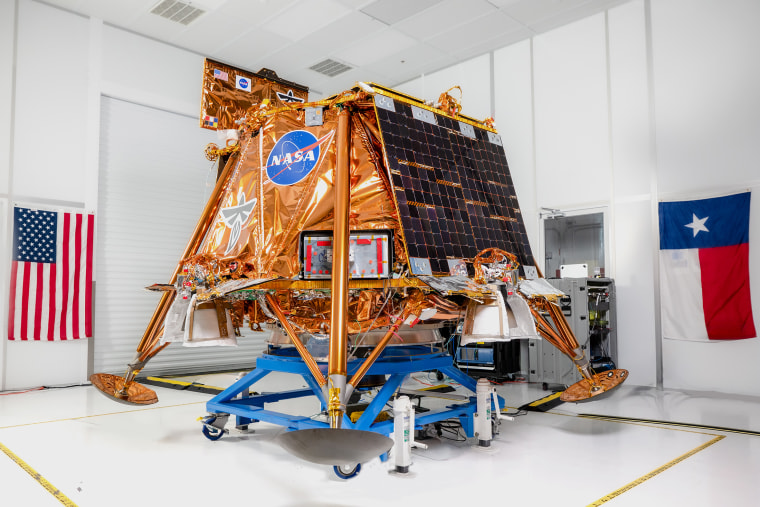Introduction: A New Era of Lunar Exploration Begins
On March 2, 2025, humanity took another giant leap toward sustainable lunar exploration. Firefly Aerospace’s Blue Ghost lander touched down in the Moon’s Mare Crisium basin, marking a historic milestone: the second successful private lunar landing and a critical step in NASA’s Artemis program. This mission underscores the growing role of commercial space companies in unlocking the Moon’s secrets—and preparing for human boots on the lunar surface by 2030.
What is the Blue Ghost Lunar Lander?
Blue Ghost, named after the rare Phausis reticulata firefly, is a car-sized lunar lander designed by Firefly Aerospace to deliver payloads to the Moon. Standing 6.5 feet tall and spanning 11 feet wide, this four-legged spacecraft combines rugged durability with advanced autonomy.
Firefly Aerospace: The Innovators Behind the Mission
Founded in 2017 and headquartered in Cedar Park, Texas, Firefly Aerospace has rapidly emerged as a leader in private space exploration. With $128 million in annual revenue and partnerships with NASA’s Commercial Lunar Payload Services (CLPS) program, Firefly blends youthful ingenuity (30% of its team are early-career engineers) with decades of aerospace expertise.
Mission Objectives & NASA’s CLPS Program
Blue Ghost’s "Ghost Riders in the Sky" mission is part of NASA’s CLPS initiative, which funds private companies to transport scientific instruments to the Moon. This $101 million collaboration aims to:
- Gather data for Artemis astronaut missions.
- Foster a competitive lunar economy.
- Test technologies for sustained lunar exploration.
Key Payloads Onboard
- Lunar Regolith Vacuum: Collects and stores soil samples for analysis.
- Heat Flow Drill: Measures subsurface temperatures up to 10 feet deep.
- Dust Mitigation Device: Tests solutions to combat abrasive lunar dust.
- Radiation Monitors: Assess surface radiation levels for astronaut safety.
- Magnetic Field Sensors: Study the Moon’s ancient magnetic history.
Technical Specifications & Standout Features
- Propulsion: Hybrid engine system with reaction control thrusters for precision landing.
- Power: SolAero solar panels generating 650W, optimized for lunar day operations.
- Autonomy: AI-driven hazard detection to select safe landing zones like Mare Crisium.
- Payload Capacity: 150 kg, supporting diverse scientific instruments.
Unique Innovation: Blue Ghost’s design leverages common components and in-house manufacturing to reduce costs—a model that sets it apart from competitors like SpaceX and Intuitive Machines.
Why Blue Ghost Matters for Artemis and Beyond
The lander’s success is a cornerstone for NASA’s Artemis program:
Resource Mapping: Heat flow and regolith composition data will guide habitat construction.
Dust Solutions: Mitigating dust preserves equipment and astronaut health.
Navigation Testing: Signals from GPS and Galileo satellites refine lunar positioning systems.
“We’re on the Moon!” declared NASA’s Science Mission Directorate leader Nicky Fox during the landing. This mission proves that commercial landers can reliably deliver critical infrastructure ahead of human arrival.
Challenges and Future Prospects
Overcoming Lunar Obstacles
Dust Hazards: Lunar dust disrupted Apollo missions; Blue Ghost’s experiments aim to solve this.
Extreme Temperatures: Surviving the two-week lunar night remains a technical hurdle.
What’s Next for Blue Ghost?
Firefly plans additional CLPS missions, including:
Delivering rovers and ISRU (In-Situ Resource Utilization) tech.
Expanding payload services for international partners.
Conclusion: The Moon as a Stepping Stone
Blue Ghost’s landing isn’t just a triumph for Firefly—it’s a paradigm shift. By combining NASA’s vision with private-sector agility, we’re accelerating toward a future where lunar bases and interplanetary travel are routine. As Firefly CTO Shea Ferring noted, “This is how we turn sci-fi into reality.”
Call to Action: Follow Firefly Aerospace’s next missions and join the conversation using #BlueGhostMoon. The Moon is just the beginning—where should we explore next?


